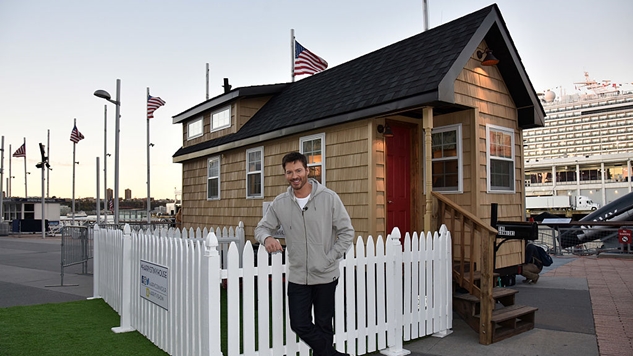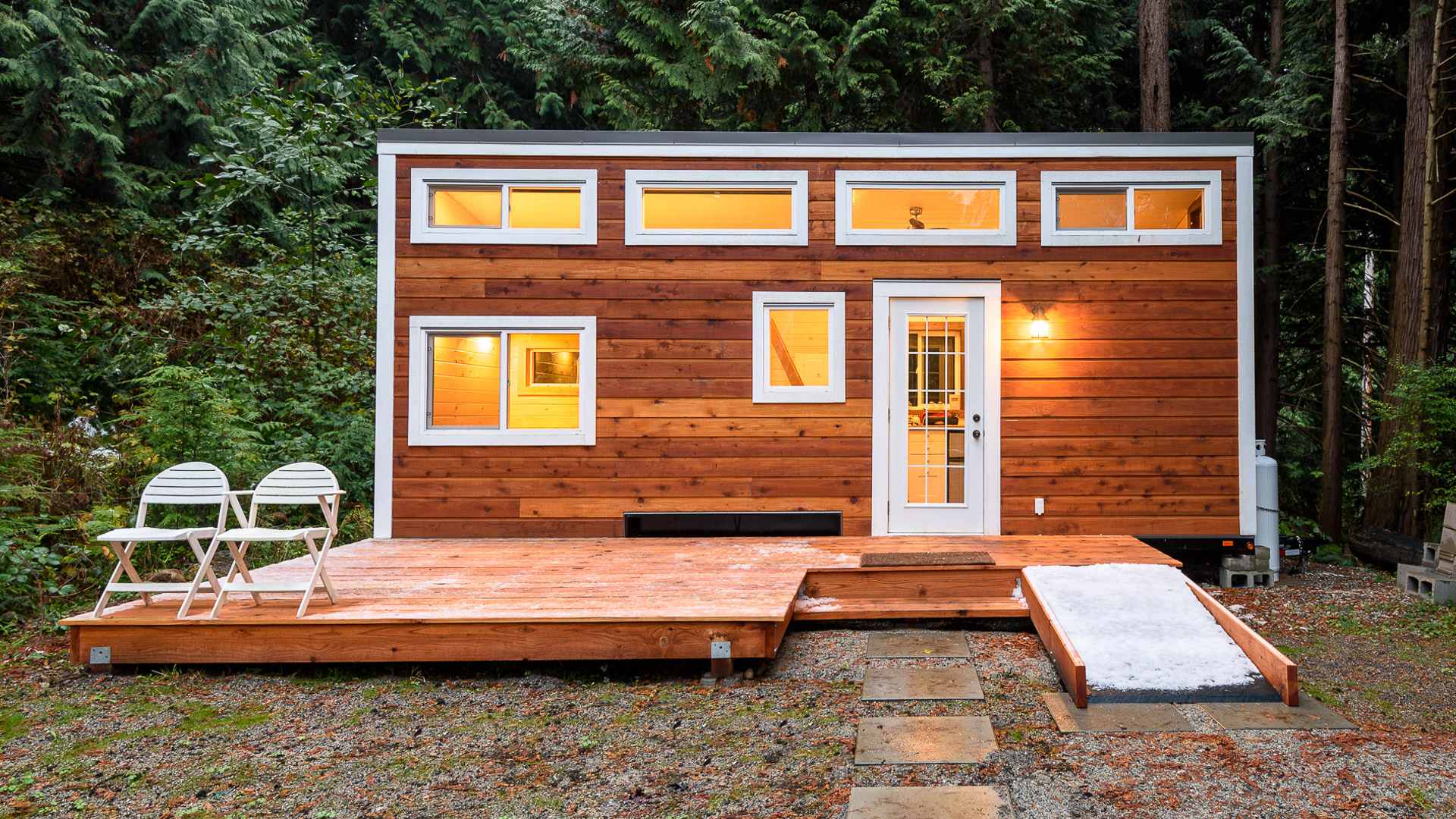A Tiny Home is a small dwelling that is typically less than 400 square feet. The average American home is about 2,600 square feet, so a Tiny Home is about one-sixth the size of a typical home. There are many reasons why people choose to live in Tiny Homes, including saving money, being more environmentally friendly, and simplifying their lives.
Although living in a Tiny Home has its benefits, there are also some drawbacks to consider before making the decision to downsize.
There’s no denying that the tiny home movement has taken off in recent years. More and more people are downsizing their living spaces in favor of a simpler, more sustainable lifestyle. But are tiny homes really worth it?
For some people, the answer is a resounding yes! Tiny homes offer all the benefits of a traditional home, but on a much smaller scale. They’re easier to maintain and clean, and can be far more affordable to heat and cool.
Plus, many people find that living in a tiny home encourages them to live a more minimalist lifestyle, which can be incredibly freeing.
Of course, tiny homes aren’t for everyone. Some people prefer the extra space and amenities that come with a larger home.
Andtiny homes can present some challenges when it comes to entertaining guests or accommodating overnight visitors.
At the end of the day, whether or not a tiny home is right for you is entirely personal preference. If you’re intrigued by the idea of downsizing your life, there’s no harm in giving it a try!

Credit: www.pastemagazine.com
What are the Benefits of Tiny Homes
There are many benefits of living in a tiny home. For one, they are much more affordable than traditional homes. Tiny homes also use less energy and resources, which is good for the environment.
They can be easier to maintain and clean, and some people find them to be more cozy and intimate than larger homes.
Are Tiny Homes Worth the Investment
The tiny home movement is one that has been gaining a lot of traction in recent years. More and more people are downsizing their living spaces in favor of a simpler, more minimalist lifestyle. But is a tiny home really worth the investment?
There are definitely some pros to owning a tiny home. First of all, they are much cheaper to build or buy than a traditional home. You can also save money on utilities and other expenses since your living space is so small.
Additionally,tiny homes are more sustainable and eco-friendly than larger homes since they use less resources.
On the other hand, there are also some potential drawbacks to tiny homes. For one thing, they can be difficult to sell if you ever decide to move since the market for them is still relatively small.
Additionally, it can be tough to fit all of your belongings into such a small space (though this may force you to declutter, which isn’t necessarily a bad thing!). And finally, if you have guests over often, they may not have anywhere comfortable to stay since most tiny homes don’t have extra bedrooms or sleeping areas.
So ultimately, whether or not a tiny home is worth the investment depends on your individual needs and preferences.
If you’re looking for a cheaper and more sustainable way to live, then a tiny home might be right for you. But if you prefer more space or want the option to entertain guests often, then you might want to stick with a traditional-sized home instead.
How Much Does a Typical Tiny Home Cost
Assuming you are referring to a tiny home on wheels in the United States, they typically cost anywhere from $10,000 to $100,000. The average price is around $60,000. Of course, this depends on the size, materials used, and amenities included.
For example, a simple 8’x16’ tiny home with no bathroom or kitchen would be on the lower end of the price range. A more luxurious 28’x8’ model with all the bells and whistles could be closer to the upper end of that same range.
The best way to get an accurate estimate for your own tiny home project is to contact a few different builders for quotes.
How Do I Downsize My Belongings to Fit into a Tiny Home
When you’re downsizing your belongings to fit into a tiny home, the first thing you need to do is go through all of your stuff and figure out what you can live without. This can be a difficult process, but it’s important to be honest with yourself about what you really need. Once you’ve pared down your belongings, start thinking about creative ways to store them.
For example, if you have a lot of clothes, see if you can hang them up instead of folding them and putting them in dresser drawers. Get rid of any furniture that takes up a lot of space, such as coffee tables and end tables. And use vertical storage as much as possible – shelves and racks are your friends when downsizing!
Can I Legally Park My Tiny Home on My Property
If you’re thinking of downsizing and want to park your tiny home on your property, you may be wondering if it’s legal. The answer depends on where you live and what zoning regulations are in place.
In some areas, parking a tiny home on your property is perfectly legal.
In others, there may be restrictions on how close the home can be to the street or other homes, or how long it can stay parked in one spot. To find out what the rules are in your area, contact your local planning department or building department. They will be able to tell you what is allowed and what isn’t.
Even if parking your tiny home on your property is technically legal, there may be other considerations to take into account. For example, if you live in an area with homeowner’s associations (HOAs), they may have rules about minimum dwelling size or appearance that could prevent you from parking a tiny home on your property. Additionally, some mortgage lenders require a minimum dwelling size when approving loans, so if you’re planning to finance your tiny home purchase, check with potential lenders ahead of time to see if they have any such requirements.
Ultimately, whether or not you can legally park a tiny home on your property comes down to knowing the regulations in your area and being aware of any other potential limitations. But as long as you do your research beforehand, there’s no reason why you can’t enjoy all the benefits of owning a Tiny Home!
What are the Challenges of Living in a Tiny Home
The challenges of living in a tiny home are many and varied. For some people, the limited space can be a real challenge, particularly if they’re used to living in a larger home. Others find that the lack of privacy can be an issue, especially if they have overnight guests.
And then there’s the issue of storage; with less space comes the need for creative storage solutions.
But despite all these challenges, more and more people are choosing to live in tiny homes. For some, it’s a financial decision;tiny homes cost far less to build or buy than traditional homes.
For others, it’s an ecological choice; by living in a smaller space, they have a smaller ecological footprint. And for still others, it’s simply a matter of preference; they prefer the simplicity and coziness of a small space.
Whatever the reason, those who live in tiny homes have learned to adapt and make the most of their limited space.
And many would say that the benefits outweigh the challenges.
Are Tiny Houses A Bad Decision?
Conclusion
If you’re considering a move to a tiny home, you may be wondering if the downsides are worth it. After all, tiny homes are significantly smaller than traditional homes, which means less living space and fewer amenities. However, there are several benefits of tiny living that may make the downsides worth it for you.
For one, tiny homes are much cheaper to build and maintain than traditional homes. Additionally, they’re more environmentally friendly due to their small size and energy-efficient design. And finally, they can offer a simpler way of life that many people find appealing.
So if you’re weighing the pros and cons of tiny living, keep these things in mind before making your decision.

